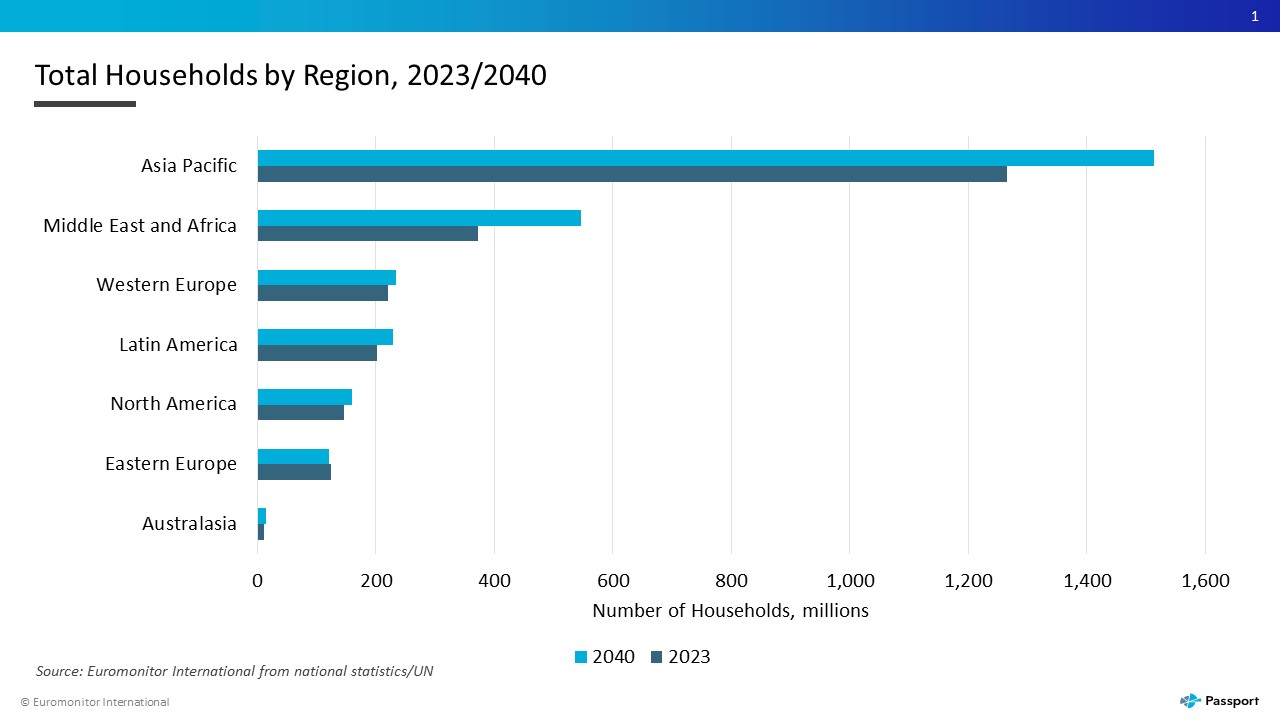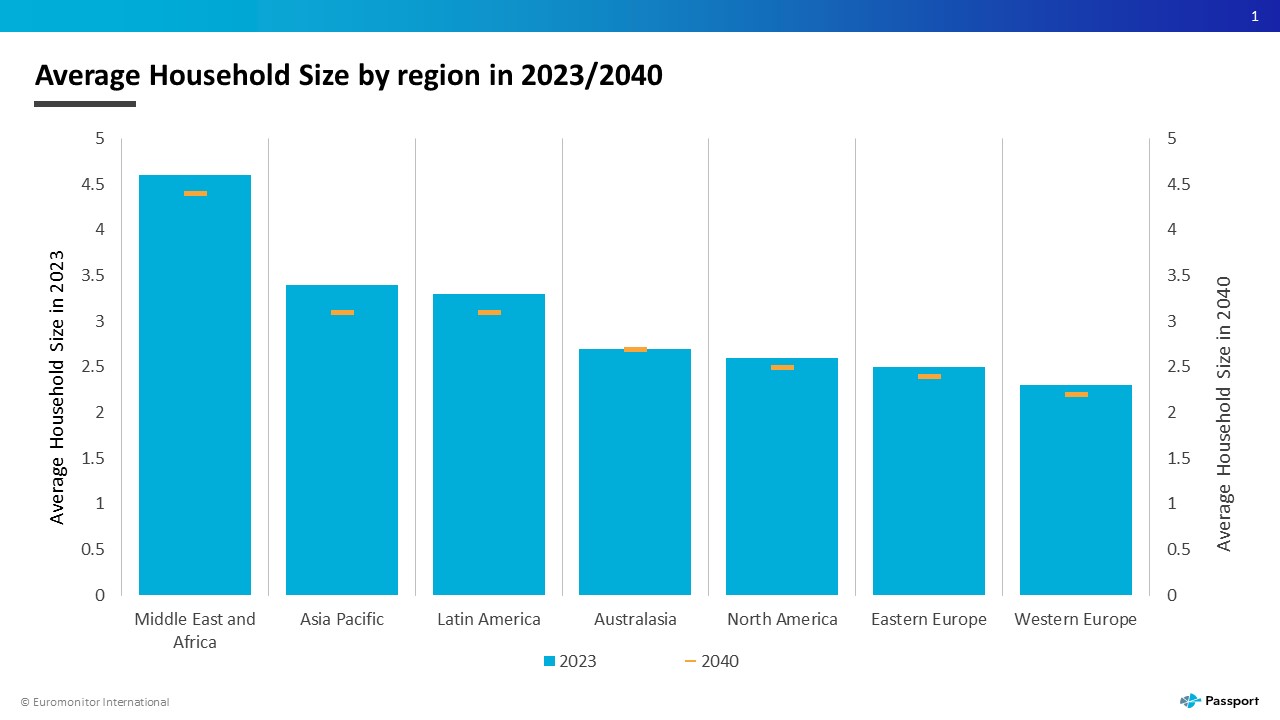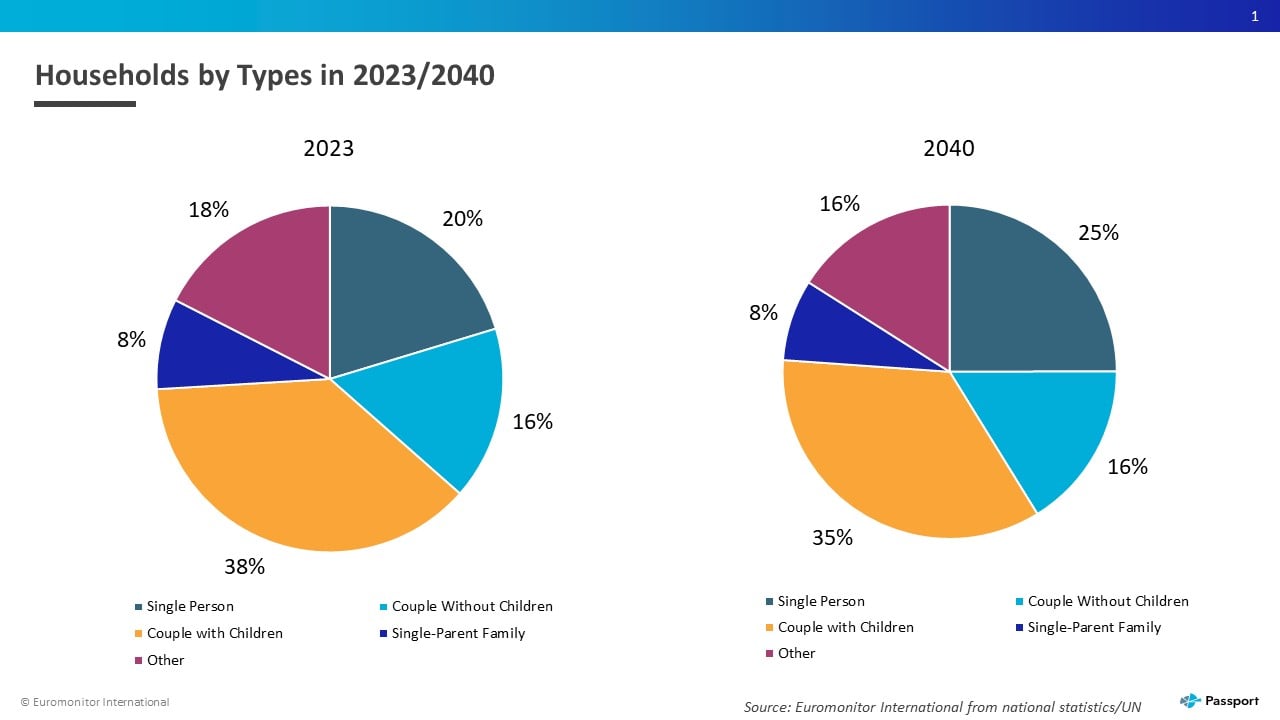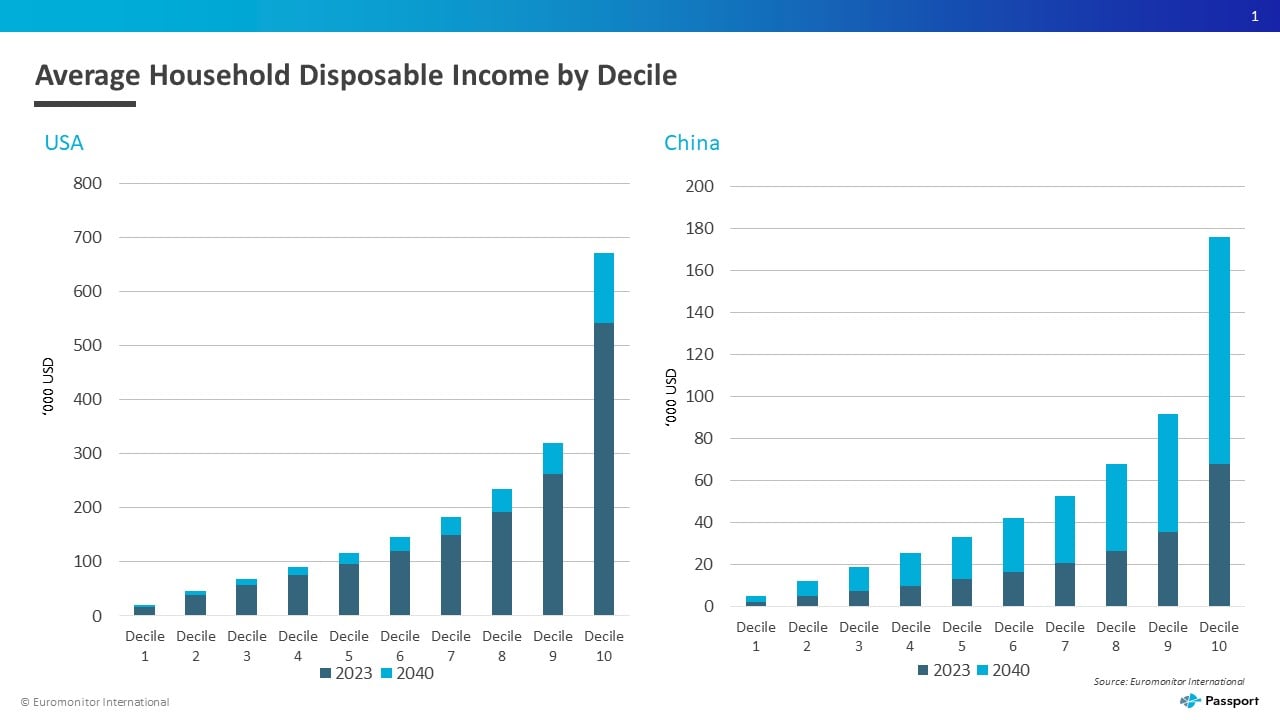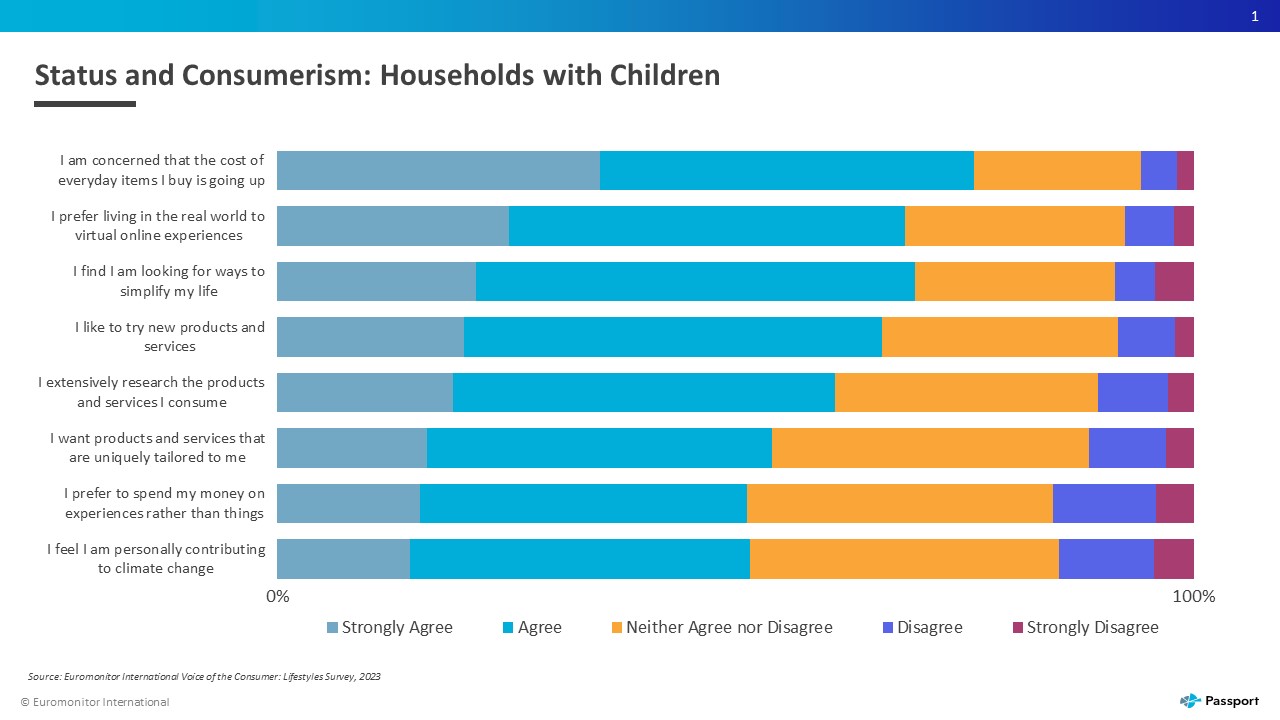Demographic, economic, and cultural factors are reshaping the longstanding family stereotype. The family unit is becoming smaller and with fewer children. Single-person and one-child homes are on the rise and must be catered for by brands. This snapshot seeks to highlight the changes in households over 2023-2040 in terms of demographic structure and income but also lists the top five strategies to address future families.
Focus on Asian Households
Asia Pacific is projected to be the largest family hub by 2040, home to over 54% of global households. Interestingly, only four countries – Azerbaijan, Indonesia, Uzbekistan and Vietnam – will retain the average household size in 2040, while Pakistan, although facing a decrease in family members, will still boast the most populous households of six persons. Brands should pay close attention to these markets and understand the unique characteristics and preferences of these and other Asian families.
Cater for Childless Families
With decreasing birth rates and an increasing number of single-person households, families without children will become the norm. By 2040, they are projected to constitute two out of three households.
Adapt to the New Normal of the One-Child Family
Although the number of families with children will decrease, they will still account for one in three households by 2040. However, one-child households will become increasingly common among those having children. With rising gross income and a decreasing number of children per family, this makes future families relatively better off in terms of spending and bargaining power. Brands should start targeting Generation Alpha in advance to grow loyal consumers in the future.
Implement Product and Price Differentiation
While the average household disposable income is predicted to grow for all income levels, affluent households will experience a more significant increase in absolute terms. Brands should develop differentiated product offerings and pricing strategies to address the varying income levels and purchasing power across different segments of the population.
Prioritise Affordability, Convenience, and Sustainability
According to the Euromonitor International Voice of the Consumer: Lifestyles Survey 2023, families with children were much more concerned about the rising cost of living (77% vs 51% of respondents living alone) and were constantly searching for convenience (72% vs 52%). These consumers are also more conscious of green behaviour and sustainability, given their focus on the wellbeing and future of their children. Brands should prioritise affordability and convenience in their offerings, while incorporating sustainable practices to resonate with the values and aspirations of future families.
For further insight and analysis, read our report, Households in Asia Pacific.

